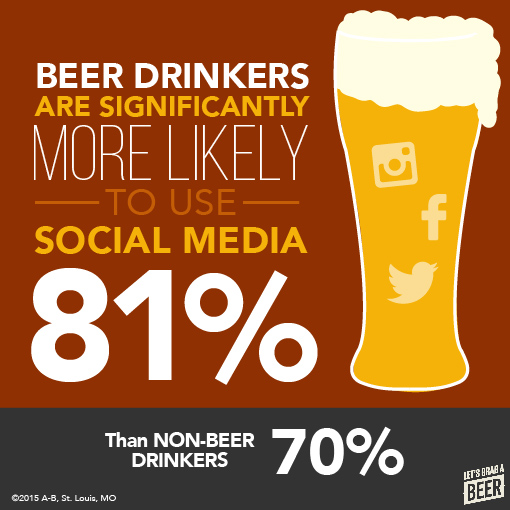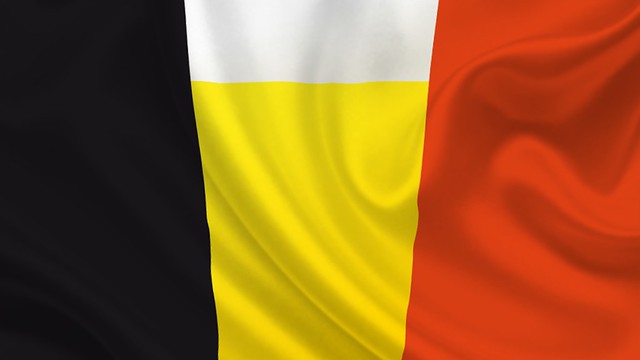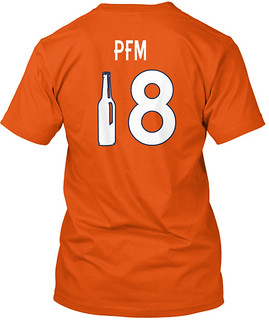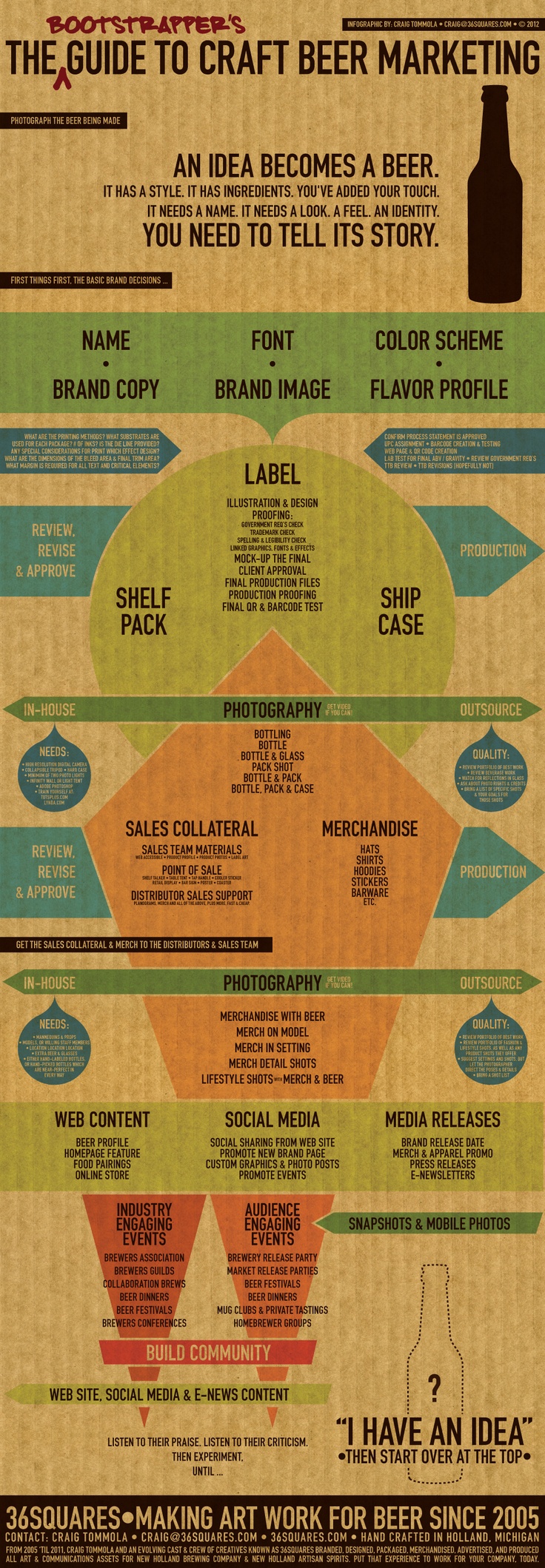![]()
Today, of course, is known by many names: National Beer Day, Beer is Back Day, Legal Beer Day, Brew Year’s Day, and New Beer’s Day. And that’s because while the repeal of the 18th Amendment wouldn’t be ratified until December 5, 1933, the Cullen-Harrison Act took effect on April 7, 1933, having been enacted by Congress on March 21 of the same year. And that meant that at least some lower-alcohol beer could legally be served in about twenty states in the United States, which I imagine after a thirteen-year drought was a welcome relief to beer lovers everywhere. Here’s the nutshell history from Wikipedia:
The Cullen–Harrison Act, named for its sponsors, Senator Pat Harrison and Representative Thomas H. Cullen, enacted by the United States Congress March 21, 1933 and signed by President Franklin D. Roosevelt the following day, legalized the sale in the United States of beer with an alcohol content of 3.2% (by weight) and wine of similarly low alcohol content, thought to be too low to be intoxicating, effective April 7, 1933. Upon signing the legislation, Roosevelt made his famous remark, “I think this would be a good time for a beer.”
Of course, he actually signed the bill on March 22, 1933, which is when he made that remark, still a full sixteen days before he could actually do so.
According to the Cullen-Harrison Act, each state had to pass similar legislation to legalize sale of the low alcohol beverages in that state. Roosevelt had previously sent a short message to Congress requesting such a bill. Sale of even such low alcohol beer had been illegal in the U.S. since Prohibition started in 1920 following the 1919 passage of the Volstead Act. Throngs gathered outside breweries and taverns for their first legal beer in many years. The passage of the Cullen–Harrison Act is celebrated as National Beer Day every year on April 7.
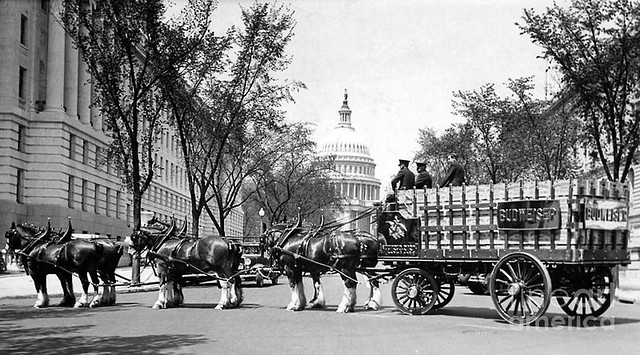
And while you often see this photo of Budweiser’s Clydesdales pulling a beer wagon to deliver beer in Washington for the president at the time, Franklin D. Roosevelt, this could not have been taken on April 7, but would have been a few weeks later at the earliest. Although the clydesdales did debut today in 1933, it was not in Washington D.C. Here’s the story, from Anheuser-Busch’s website:
On April 7, 1933, August A. Busch, Jr. and Adolphus Busch III surprised their father, August A. Busch, Sr., with the gift of a six-horse Clydesdale hitch to commemorate the repeal of Prohibition of beer.
Realizing the marketing potential of a horse-drawn beer wagon, the company also arranged to have a second six-horse Clydesdale hitch sent to New York on April 7 to mark the event. The Clydesdales drew a crowd of thousands on their way to the Empire State Building. After a small ceremony, a case of Budweiser was presented to former Governor Alfred E. Smith in appreciation of his years of service in the fight against Prohibition.
This hitch continued on a tour of New England and the Mid-Atlantic states, thrilling thousands, before stopping in Washington, D.C., in April 1933 to reenact the delivery of one of the first cases of Budweiser to President Franklin Delano Roosevelt. The St. Louis hitch also toured in celebration, stopping in Chicago and other Midwestern cities.
Shortly after the hitch was first introduced, the six-horse Clydesdale team increased to eight. On March 30, 1950, in commemoration of the opening of the Anheuser-Busch Newark Brewery, a Dalmatian was introduced as the Budweiser Clydesdales’ mascot. Now, a Dalmatian travels with each of the Clydesdale hitches.

Original Budweiser Clydesdale Six-horse Hitch and Beer Wagon, in front of the St. Louis Brewery in 1933.
And here’s the story from Wikipedia:
The Budweiser Clydesdales were first introduced to the public on April 7, 1933, to celebrate the repeal of Prohibition. August A. Busch, Jr. presented the hitch as a gift to his father, August Anheuser Busch, Sr., who was guided outside the brewery by the ruse of being told his son had purchased him a new car, but instead was greeted by the horses, pulling a red, white and gold beer wagon. The hitch proceeded to carry the first case of post-Prohibition beer from the St. Louis brewery in a special journey down Pestalozzi Street in St. Louis.
Recognizing the advertising and promotional potential of a horse-drawn beer wagon, Busch, Sr. had the team sent by rail to New York City, where it picked up two cases of Budweiser beer at New Jersey’s Newark Airport, and presented it to Al Smith, former governor of New York and an instrumental force in the repeal of Prohibition. From there, the Clydesdales continued on a tour of New England and the Mid-Atlantic States, a journey that included the delivery of a case of beer to President Franklin D. Roosevelt at the White House.

The Budweiser Clydesdales are still going, of course, and have been a great marketing tool for the beer company. My daughter is a horse lover, and has been doing equestrian vaulting (essentially gymnastics on the back of a moving horse) since she was six-years old. When she was seven, in 2011, I took her to see the clydesdales at the Fairfield Budweiser brewery. I had called ahead, and we had a private tour of the brewery first, which was fun, and then the horses arrived in several specially designed trucks and put on a demonstration in the parking lot. We watched as they unloaded them, groomed them and then got them ready. Then they hooked them up to the wagon and they circled the parking lot. My daughter had a great time and the horses, to her at least, were beautiful and the attention to detail they put into them was amazing. Anyway, here’s a few photos from that trip.

My daughter Alice, ready for the brewery tour.
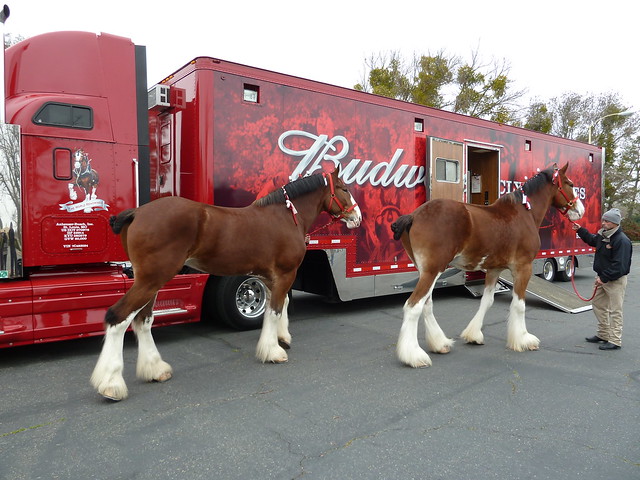
The horses arrives.
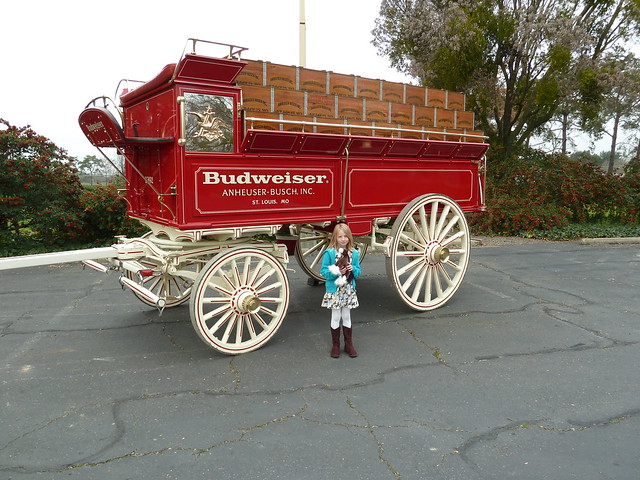
Alice in front of the beer wagon.
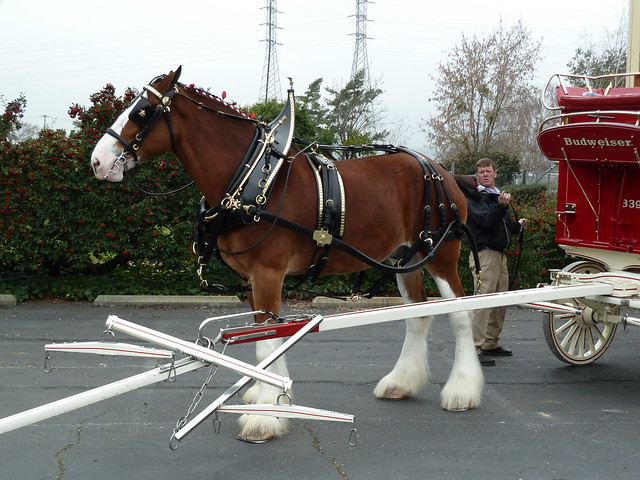
After getting the horses ready, they started hitching them up, one by one.
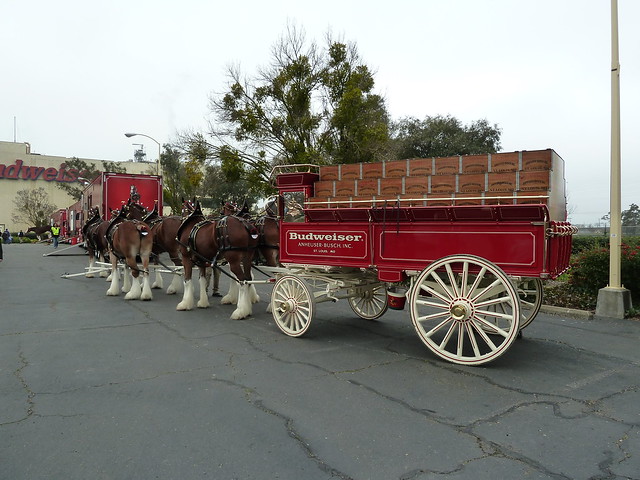
Until they were all hitched and ready to go.






